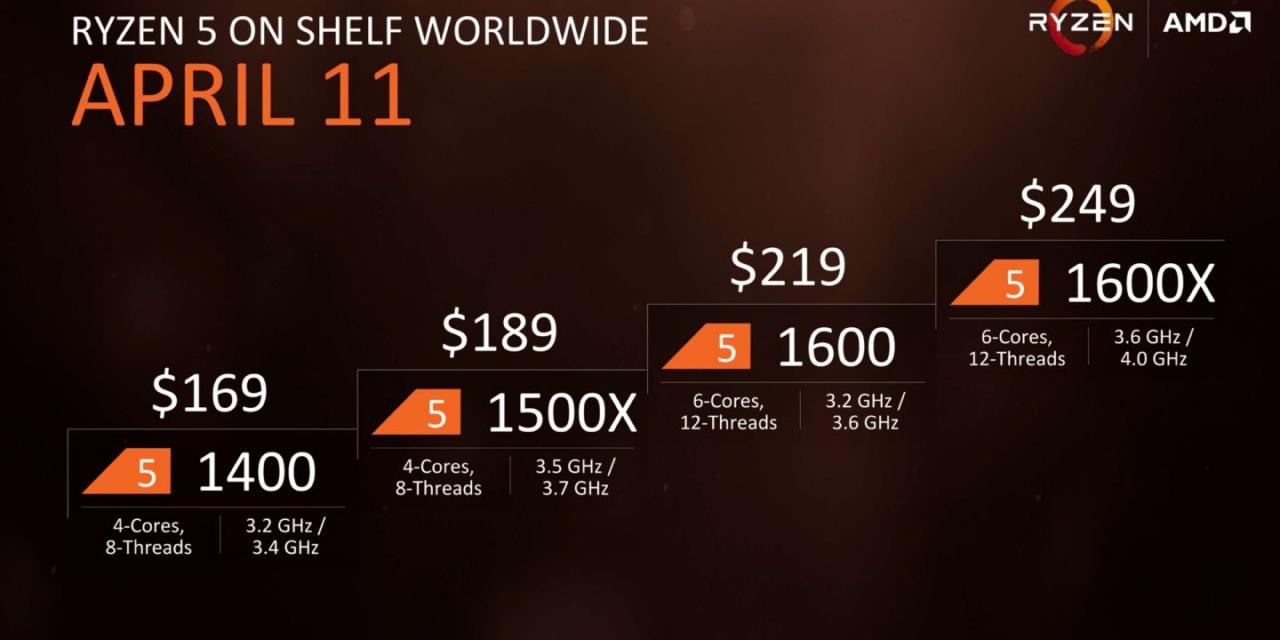
AMD's Ryzen 7 debut was an impressive one. It might have suffered a little in the odd gaming benchmark, but for the first time in a decade we're seeing AMD compete directly with Intel's top of the line hardware and it's doing it for about half the price. But as much as AMD is being competitive at the high-end, it's also looking to dominate in its more typical space: the more affordable mainstream.
That's where Ryzen 5 processors come in. Starting with the 1600X at $250, it comes packing six cores with 12 threads thanks to simultaneous multithreading and boosts up to 4.0GHz from 3.6Ghz.
Coming up next is the $220 1600 which is identical to its bigger brother, but has a lower clock speed of 3.2Ghz which boosts up to 3.6Ghz - though there will likely be some more overclocking headroom there.
The 1500X is the four core, eight thread variant next down the list, with a core speed of 3.5Ghz, which boosts up to 3.7Ghz. Its little brother, the 1400, has the same number of cores, but its clock speed is 3.2Ghz and 3.4Ghz respectively.
With less cores, comes less cache on the lower end models too, which will be part of where the performance is lost on those parts, perhaps more so than the few hundred megahertz that they drop off.
But still, most of these should be competitive with Intel hardware. Single core performance should be improved without all of the extra cores and threads of the heftier chips and multi-core performance should remain strong with AMD's multithreading.
This certainly makes the landscape for new chip buyers much more competitive, which is what we like to see in the hardware game.








